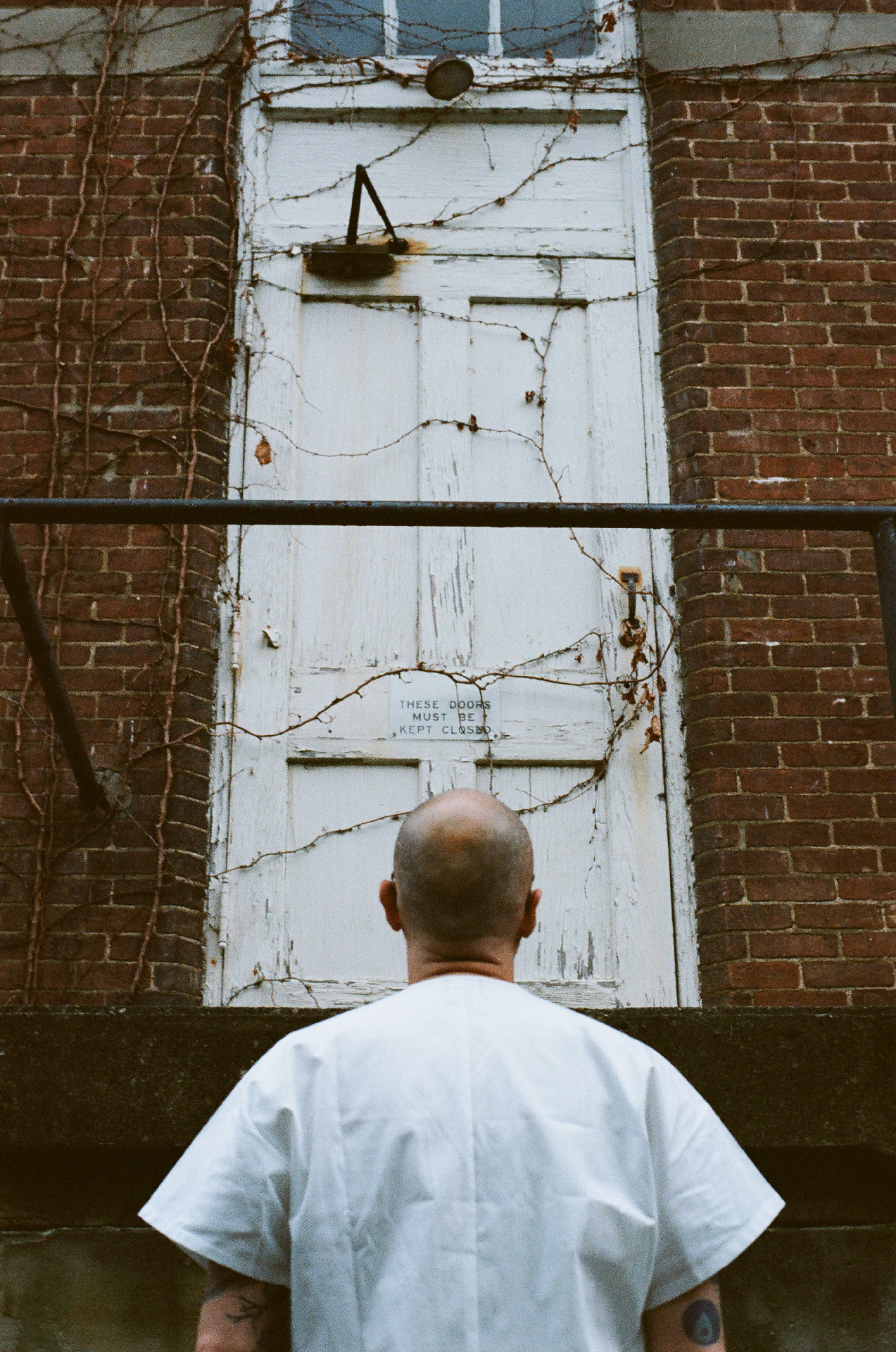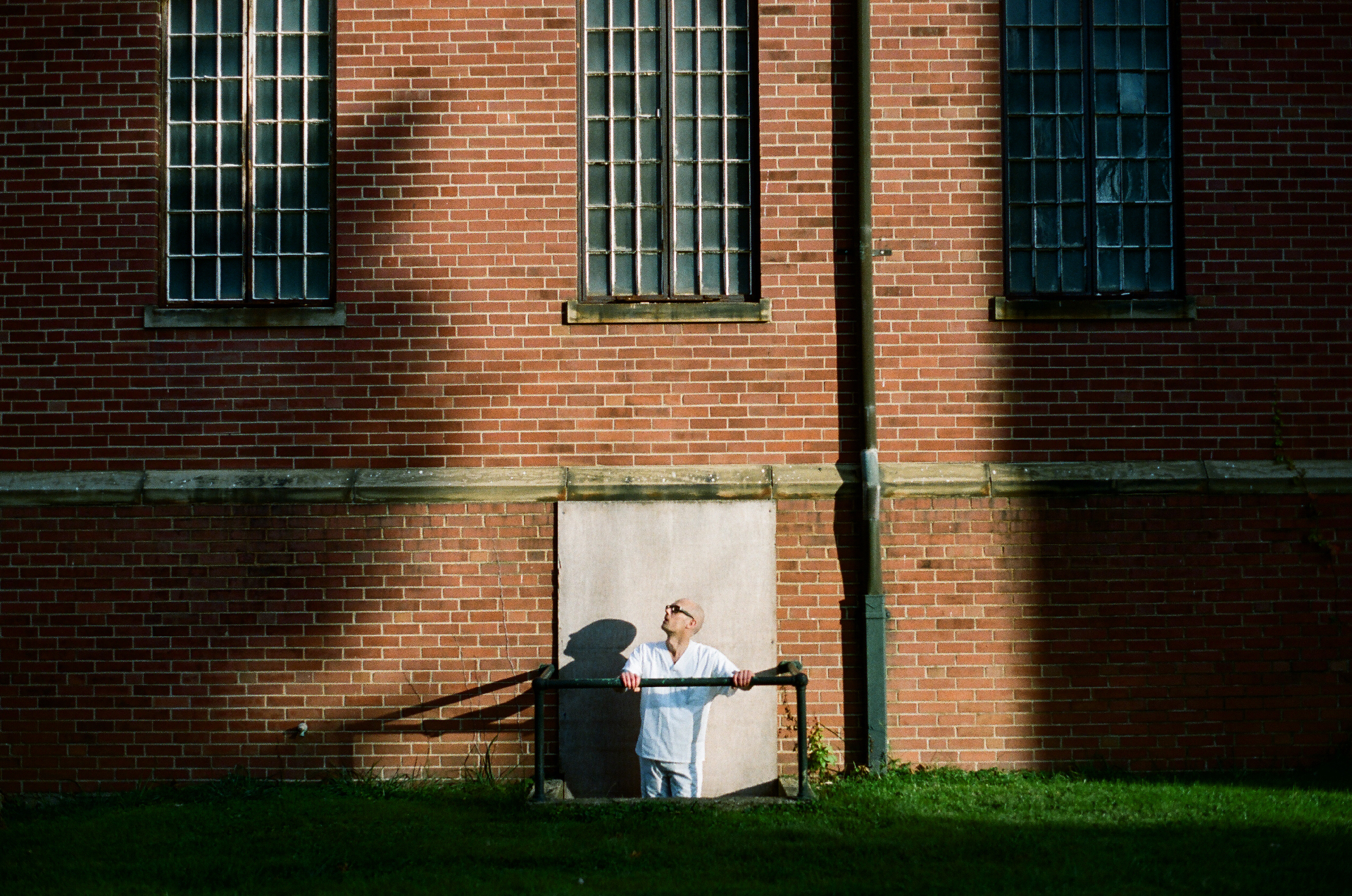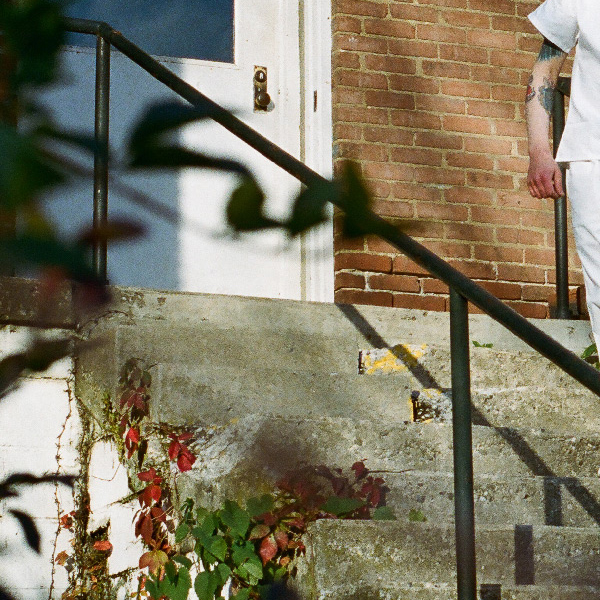-
Joe
Why did you go to the VA hospital?
-
Mark
Because it was paid for.
-
Joe
Right, by why did you look for any kind of assistance at all?
-
Mark
When I put the noose in the tree and clumb it.
-
Joe
Oh ... OK.
-
Mark
You didn't hear that part, did ya?
-
Joe
Well, you know how it is. Mom never wants to get into the nitty gritty of shit. Mom always wants things to be better than they are.
-
Mark
I believe they call that denial? “My kids are fine.” No mom, we're all bent. It's not your fault, but we're still bent. We ain't broken yet, but we're bent.
Crazy
-
Words
Joe Jarvis
-
Photos
Willie Leatherwood
-
Design
Stefan Draht
This is a story about 2.5 escapes.
This is a story about 2.5 escapes. The original idea for this story was different. It was about all-white hospital scrubs.
In the fall of 2014 I went back to my hometown of Athens, Ohio with two photographers. I wore all-white scrubs while walking the grounds at the Ridges, the hilltop compound of massive Victorian buildings that once operated as the Athens Lunatic Asylum. Our photographs, I imagined, would draw parallels between the oppressive power of institutional architecture and the oppressive power of institutional clothing. The story would examine how all-white scrubs became the iconic (if not the actual) uniform of mental-health patients. As a sidebar, I would write about one of my earliest childhood memories, when Mom and I visited my brother Ed at the Ridges, where Ed stayed during the early 1980s as a guest of the State of Ohio. But in the months following my trip back home, the Veterans Health Administration psychiatric facility in Chillicothe, Ohio admitted my brother Mark for suicidal depression. Around the same time I began treatment in Chicago for the same condition. Meanwhile, I kept thinking about my childhood visit with Ed.
So the story changed.
Escape 1: Mark
-
Joe
So how did that work? Did you make the noose?
-
Mark
Oh, yeah. I went online and learned how to tie a noose. Tied it all up. Threw it in the tree. Tied it off and had a ladder going up to it. It's funny ‘cause you know I don't like restrictive clothing. All my t-shirts, I rip the necks. And I'm afraid of heights. But I went right up that tree. I was about 16 foot up. My neighbor saw me and said, "What the hell are you doin'?"
I said, “Oh, I don't know. What are you doin’?”
So, I'm up in the tree talking to him. He got me to come down and we called Aunt Elaine and she came and picked me up.
“I went online and learned how to tie a noose.”
Tecumseh!
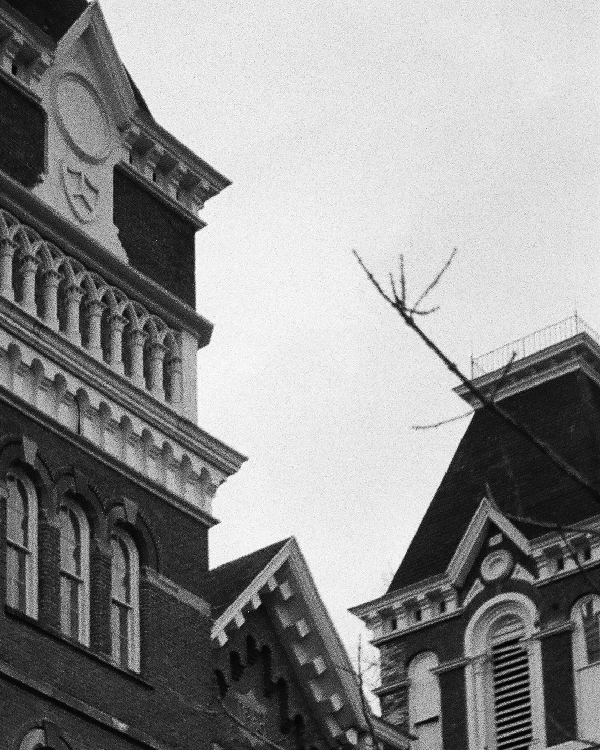
I only know a few things about Chillicothe, Ohio. First of all, thanks to a paper mill, the place reeks to high heaven. Second, according to tradition, Chillicothe is the birthplace of Tecumseh, a legendary Shawnee chief. When I was a teenager, my church youth group went to Chillicothe to see “TECUMSEH!,” an outdoor drama that has been staged during the summer months for 25 years. I don’t remember whether the play included Tenskwatawa, the one-eyed younger brother of Tecumseh whose battles with alcoholism and depression offset his considerable ambition.
Lastly, I know that Chillicothe has a VA hospital that specializes in mental health. That’s where Mark (a former U.S. airman) ended up after his neighbor talked him out of the tree.
-
Mark
This facility is one of the top-rated in the States. There's a guy here from Maine that flew in here just to come to this facility for the mental health.
-
Joe
So are all the people there veterans?
-
Mark
Yes.
-
Joe
How much of it is like PTSD?
-
Mark
Probably 70 percent.
-
Joe
No shit.
-
Mark
No shit.
-
Joe
How do their ages break out?
-
Mark
It runs that gamut. It's everything from 23 to 70 years old. You’ve got people who are here for their fifth and sixth times.
-
Joe
So, it's not substance abuse. It's mental health?
-
Mark
It's both. Dual diagnosis. Some people are one or the other. Normally if you go to the mental-health side, you also have a substance-abuse problem. That's just the way it works.
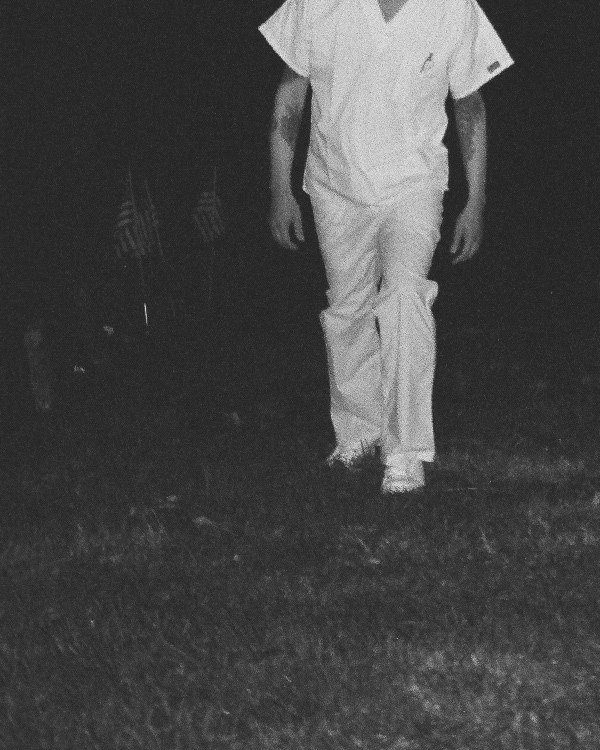
-
Joe
So you go to the VA. Typically, you don't even like to go into town. You don't like to be around people.
-
Mark
Yeah. Well I was to the point where if I didn't ... The main reason I'm alive is because of you guys, basically. I wouldn't put the family through that again. I've seen what it does. Granted, you could have just grieved for a couple of days and said, “Oh, I remember him,” instead of having to worry about me, but if I come here and get better, you don't have to worry about me, either. So that was the deciding factor into getting help.
-
Joe
Have you adjusted to being there?
-
Mark
After the first three days I was fine because I got my blood work straight, got me on Clonidine to get me off the withdrawals. I was on it for three days and then I was fine. All the suicidal thoughts and all that were gone. There was no tunnel vision. I saw hope, basically. Up until then, I didn't want to die, I just wanted to be dead.
-
Joe
Yeah, I know what you mean. Do you have classes or group sessions?
-
Mark
Oh my god. FATP, the substance-abuse program, every class dealt with triggers and the process of relapse: triggers, cravings, relapse―the three steps. It's like, no matter what they called the class, that's what it was. You could use the exact same handout for each one. First week, I was still kind of getting used to it. The second week I learned all of it. The third week I was done.
We’re in group therapy:
“OK, what are your triggers?”
I’m like, “Well, right now, you are. You really make me want to go buy a fuckin' bag of heroin and shoot it. Do you have any new information?”
And they'd roll their eyes and go, “Oh well, there's Mark.”
Escape 2: Ed
The judge offered him an escape
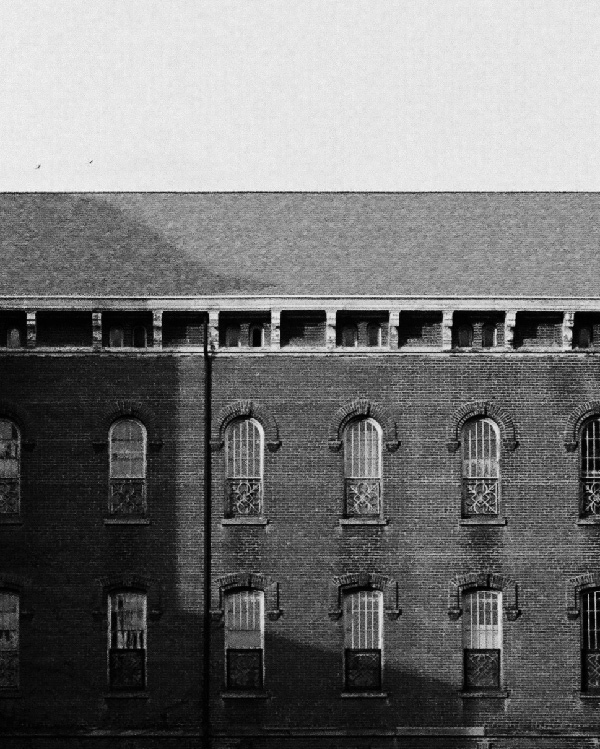
Ed drove a tow truck for the Sohio gas station in Athens, Ohio. One day he drove his truck to Carriage Hill Apartments, where he circled around the parking lot until he spotted his ex-wife’s Ford Pinto. (The Ford Pinto was a model of subcompact car notorious for its unflattering design and tendency to burst into flames.) Ed maneuvered his truck so the Pinto was directly in his path. Then he accelerated. He knew the car was empty, that his ex-wife and their two children were safe inside an apartment. Upon impact, no one was hurt, and no Pinto explosion. When Ed appeared for sentencing, the judge offered him an escape: Go to the Ridges, aka the Athens Mental Health Center, instead of jail.
In 2014 I talked to Ed for the first time in 15 years. I asked if he would tell me about the Ridges and our family’s history of mental illness. He agreed and suggested that we talk during one of his early-morning hauls. (Years ago Ed graduated from tow trucks to big rigs.) We chatted on Facebook and set up several times to talk. Each time I called, I got Ed’s voicemail. In response I would message him on Facebook. We would then agree on a new time. I would call and get his voicemail. And so on. Eventually, even my Facebook messages went unanswered.
I only remember a few things from the one time we actually did talk, as described below:
Ed was surprised by how many people he knew at the Ridges.
Ed was surprised by how many people he knew at the Ridges.
Ed wouldn’t have expected to find anyone familiar at a mental hospital. We grew up outside Athens in the country, where mental illness didn’t exist. Make no mistake, Lodi Township was full of people who were crazier than shithouse rats, and there was no shortage of crazy old coots. Old Man Bradley once welcomed a new neighbor to Long Run Road by driving to the guy’s house, hoisting a pistol into the air, and discharging several rounds. Mr. Bradley was mean as a snake and by all accounts “crazy”, but I don’t remember anyone describing him as “mentally ill”―not even so much as, “He has issues” or “He needs help.” Overt violence was simply part of his personality. Rural culture reads psychotic behavior as eccentricity.
We also knew people who were touched or one brick shy of a load. Others weren’t all there, weren’t right in the head, or had elevators that didn’t go all the way to the top floor. Still others, like Mark and me, were predisposed to getting blue, down, or low. According to Mom, while I was growing up, Dad often said to her, “It seems like Joe has been pretty low lately.” But mental illness, as a concept, didn’t exist. Even had we been aware of it, conventional treatments like “seeking help” or “talking to someone”—all of which involved telling your business to some namby-pamby egghead and likely Democrat (and paying through the nose to do it), would have struck us as unadorned big-city nonsense.
Of course Ed was surprised by how many people he knew at the Ridges. Up to that point, he probably thought he was the only person in Athens County who was slowly being killed by his own mind.
One of the nurses had dated our brother, Joey Gavilan Jarvis, and she looked out for Ed.
One of the nurses had dated our brother, Joey Gavilan Jarvis, and she looked out for Ed.
Having dated Joey Gavilan, the nurse probably knew our family history. I imagine Joey told her about the two suicides in our immediate family. Frances Jarvis killed herself in 1969. Frances was Dad’s second wife and mother to seven of my nine half-siblings, including Joey, Bobby, Patricia, Mark, and Ed. When Frances ended her life, the gunshot woke up the entire house. Four years later, Bobby’s wife pulled into their garage to find him hanging from the ceiling.
In 1975, long after the nurse and Joey had broken up, Joey was murdered in Akron. Four years later, my sister Patty was shot dead in a trailer park. I’m sure the nurse heard about all of this. Our family had a reputation in Lodi Township. People called us the Hillbilly Kennedys, given our knack for blood-soaked tragedy.
For the nurse, seeing Ed show up at the Ridges was probably one of those situations where you’re shocked, but not the least bit surprised.
Overall, Ed enjoyed his stay.
Overall, Ed enjoyed his stay.
Unlike Mark’s time at the VA hospital some 30 years later, Ed didn’t have to attend boring classes. He stayed at the Ridges for two months. The staff gave him plenty of space, and the nurse who dated Joey made sure he was comfortable. In the end, Ed vindicated the judge. By institutionalizing my brother, the judge actually offered Ed an escape―both from the situation of prison and the condition of mental illness. Ed, to his credit, made the most of it. Ed went on to serve honorably in the U.S. Army as a tank commander. During his enlistment he married a woman named Vicki, and they have been together some 25 years. Ed started his own trucking company after leaving the service, and today he still drives big rigs. When Hurricane Harvey hit Houston, he hauled in supplies from Florida, his adopted home state.
As for that old childhood memory about visiting Ed at the Ridges, I don’t remember Mom turning off Dairy Lane and slowly climbing Park Drive in our groaning Ford Escort. I don’t remember standing on the porch of Building 21 and looking out at the low-lying Hocking River, Ohio University’s football and basketball stadiums, and the hospital where I was born. All I remember is this: I am in in an unremarkable room. Mom sits across a long table from me. Behind her, books cover the far wall. Ed stands off to my right, in front of a window. Sunlight streams around him, like water around rocks. The outline of his body softly glows. He is gilded, like the pages of a family Bible. The light bounces off his blond hair, making a Frisbee-sized halo. When I look at him, I have to squint.
I have one other childhood memory of Ed. It is years after the Ridges. Ed has come home from Germany with spoils of war stuffed into a canvas knapsack: merit badges, regiment patches, a canteen, a camouflage hat with ear flaps, and a variety of MREs, or “meals ready to eat.” MREs are pouches of dehydrated food intended for combat troops: stiff lasagna, chicken that calls to mind cat food―that kind of thing. (Wanting to be like my brother, I will refuse to eat Mom’s home cooking for a week.) Anyway, that’s not the memory. The memory is of Ed and me standing under the giant sycamore tree behind the barn, at the edge of a gully. I am wearing my new camouflage hat, with the ear flaps turned up because it’s summer. A limb of the sycamore extends out over the gully. A long, thick yellow rope has been strung up over the limb. A couple of feet above the ground, the rope has been tied off, forming a huge loop. At the bottom of the loop there is a two-by-four piece of wood with notches cut into either side. Rope runs through the notches, holding the two-by-four in place.
I sit down on the two-by-four and walk backwards until the rope is taut. Now I run forward, holding onto the rope for dear life. At the edge of the gully, I push my bottom down hard into the seat and kick my legs forward.
I soar.
During springtime the gully floods, but now it is dry as bones. Fifteen feet below me, jagged rocks and sun-baked red clay eagerly await a loss of balance. At the highest point of my outward trajectory, I lose my momentum. I hover for a split second in mid-air. I look down. My stomach bottoms out. Then I start falling backwards, quicker and quicker towards the bank. Between my feet I see rocks, red clay, grass, little brittle scrolls of sycamore bark that are speckled gray and white. Then Ed’s hands catch my shoulders. There is another split-second pause before he pushes me back out over the edge. Again and again we repeat this cycle, me soaring out above the abyss and then falling back to safety, into my brother’s steady hands.
Escape 2.5: Joe
Fake it ‘til you make it,
One day at a time,
Do the next right thing,
Let go and let God,
etc.
There are countless sayings and slogans in Alcoholics Anonymous, and most of them are meaningless due to overuse. When you ask an AA member for advice and they don’t have an answer, you’ll hear “Fake it 'til you make it,” or “Do the next right thing.” But one saying is different. I actually only heard it a single time, so maybe it’s not really a saying. Maybe it’s better described as esoteric wisdom disguised in saying form. During one of the hundreds of meetings I attended before leaving AA, a woman commented and said, “When you take alcohol away from the alcoholic, all you’re left with is ick.”
It sounds folksy, even goofy. But it describes the alcoholic’s essential dilemma. And once you understand that dilemma, you understand the final escape.
A man in a beret is yelling at me.
A man in a beret is yelling at me.
The man is named Gary. He and I are standing outside Fourth Presbyterian Church on Chestnut Street in Chicago. The church is limestone. The sky is limestone, about to dump snow. Around Gary’s open mouth, vapor swirls like exhaust from tail pipes. Time has washed out Gary’s face into age-spotted porcelain. Under his beret, strawberry-blond hair covers half of each ear. A deeper red is checkered across his Burberry trench-coat collar, which is flipped up against the cold. Gary has been sober for a quarter century, and he has practiced meditation for nearly as long. Every year, he attends several meditation retreats and buys CD recordings of his favorite guest speakers. Our current situation notwithstanding, Gary has always been kind to me. In AA meetings, I used to talk about wanting to kill myself. Back then, I still had all the problems that originally drove me to drink, but I no longer had alcohol to ease those problems.
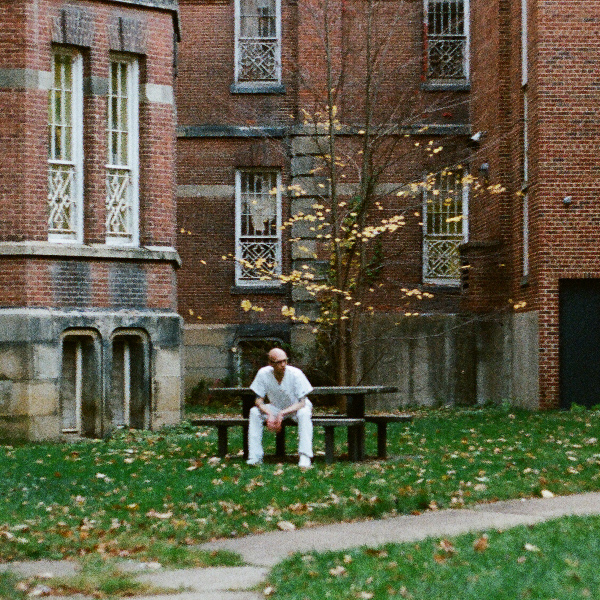
All I had left was ick.
Gary was the only person who would approach me after my suicidal rants, always with a kind word. One day last year he even invited me along on a day trip to an AA meeting near his Michigan weekend home. Today, on this cold Chicago morning, I don’t want to die, mostly because I am working the 12 Steps with a sponsor. The Steps were once essential to AA, but they have fallen out of vogue. These days, AA is mostly about going to meetings and talking about your problems and how they make you feel. A lot of people get nervous when you even mention the Steps. They think you might be a Big Book Thumper. That’s one of the things Gary is yelling at me now: “What are you, a Big Book Thumper?” The term “Big Book thumper” is an adaptation of “Bible thumper.” The Big Book is AA’s main text. It is an instruction manual for dealing with ick.
Fifteen minutes ago in our morning meeting, I said, “I started working the Steps and now I don’t want to die.” Now Gary is yelling at me, but Gary is not really angry at me for mentioning the Steps. He is angry because he is afraid, and he is afraid because he thinks I am trying to kill him. That’s what I learned from his meditation CDs, which I heard on our ride to Michigan a year ago. The speaker said that humans confuse what we believe for who we are. When people agree with our beliefs, they reaffirm our false conceptions of ourselves. This gives us a thrill, which we call “love.” When people disagree with our beliefs, we get a jolt of fear. We call this fear “hate.” Hate tells us that we are under attack, and that we have to kill to stay alive. This is why couples quarrel. This is why nations drop bombs on each other. This is why Gary is yelling at me. As exhaust continues to pour from Gary’s tail pipe, I wonder, “Is this what I have to look forward to? When I’ve been sober 25 years, will I be yelling at people on the street because I disagree with them?”
Unlike Gary, I am not afraid, at least not now. But if I stop working the Steps, in no time I will be overwhelmed by my own kill-or-be-killed fear. Remove the decades of sobriety, Step work, and meditation, and Gary and I are the same.
All we have left is ick.
All I had left was ick.
“Wherever you go, there you are.” *
I forgot about this saying. It’s popular in AA and still means something despite widespread use. AA members often talk about the Geographic Cure, which is the idea that we can escape our troubles by moving somewhere new. Sadly, our troubles always follow along. That’s because our troubles are of our own making. An old-timer in AA might convey this wisdom to an antsy newcomer by saying, “Wherever you go, there you are.”
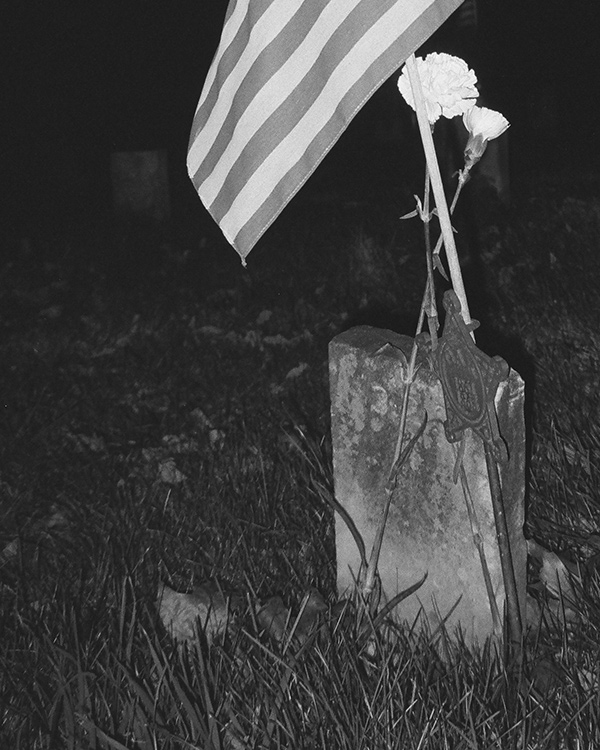
Designer jeans, heavy metal, video games, professional wrestling―Dad considered all these things ridiculous. So, he ridiculed them, often and at volume. To free his youngest son from such frivolity, he made me skin squirrels, dig post holes, paint fences, clean the garage floor on my hands and knees with a horse-hair brush, mow the field below the house while making perfectly straight passes on the tractor, etc. I was small and weak. (Dad nicknamed me “Piddle” because I was just a little piss.) Farm work overwhelmed me, and my physical struggles and obvious disinterest further irritated the old man.
Not surprisingly, Dad showed up on my Fourth Step resentment list. More surprisingly, and only at my sponsor’s continued suggestion, he later showed up on my Ninth Step amends list. Dad had been dead for 10 years by then, so my sponsor suggested that I write an amends letter. My hand dragged the pen across the paper deliberately, begrudgingly, slowly, D... E ... A ... R … D ... A ... D. I was stalling for time, not sure what to write next, or what amends I could possibly owe Dad in the first place. But just then, as I was moving the pen across the page, a new perspective presented itself to me. It materialized in my mind, as if from nowhere. I understood in an instant that Dad never intended the work as punishment. This was a man who dropped out of fifth grade while growing up in Calhoun County, West Virginia during the Great Depression, and who worked for a quarter of a century in Akron’s rubber factories. By making me work, he was not punishing me. He was trying to teach me the only skill he ever knew: manual labor.
Memories started gathering around this new point of view. I remembered Dad telling me that his mother said “I love you” exactly once to him (his father never said those words at all). A teacher gave him a small drum when he was a boy. This was the only gift he ever received while growing up, from anyone.
Dad had done his best for me, and it was far better than he had been shown to do. This was the most powerful insight I gained while working the 12 Steps, but by no means the only one. Prior to working the Steps, I had experienced life through a first-person-shooter perspective, seeing only what was immediately in front of me, ready to attack anyone who got in my way. Sobriety pulled the camera back, back, back, until I could see myself interacting with the world. The Steps held my idea of who I was up to the light. When I looked at myself, I had to squint.
See the similarities, not the differences.
That’s another saying I didn’t remember until now, which is fitting because I kept forgetting it while in AA. I always saw the differences between me and Gary; between me and Ginger, who told me I was codependent on my wife (whom Ginger had never met); between me and the true fundamentalists like Tim, who told me to quit therapy and to stop taking doctor-prescribed medications; between me and the majority of people in meetings, who talked about their problems and how their problems made them feel, instead of what they were doing to stay sober that day.
I stopped talking about the Steps in meetings. I stopped talking about my wife in meetings. I stopped talking about therapy in meetings. I stopped talking about doctor-prescribed medication in meetings. My sponsor told me, “You should be able to go to a meeting and talk about whatever you want, and people should respect that. But you’re a fool to expect it.”
Eventually, I stopped going to meetings.
See the similarities, not the differences.
“We are not fighting (alcohol), neither are we avoiding temptation. . . . We have not even sworn off. Instead, the problem has been removed. It does not exist for us. . . . . That is how we react so long as we keep in fit spiritual condition.”
—Alcoholics Anonymous, aka The Big Book, p. 85
But then, one paragraph later:
“It is easy to let up on the spiritual program of action and rest on our laurels. We are headed for trouble if we do, for alcohol is a subtle foe. We are not cured of alcoholism.”
In these two passages, Bill Wilson captures the essential distinction and dilemma: The problem of alcohol does not exist for the sober alcoholic, but the sober alcoholic is not cured of alcoholism. Alcohol-ism exists even in the absence of alcohol. Ethyl alcohol is a drug. The ism, however, is a different beast altogether. The ism is the false self-conception, the grotesque distortion created by the first-person-shooter camera that never pulls back. It is an infinite web composed of different, delusional strands: the unappreciated son, the awkward child, the unencouraged student, the hostage to family-enforced religion, the wayward teen, the self-styled psychonaut, the firebrand grad student, the great layer of women, the author, the impoverished alcoholic, the copywriter, the brand journalist, the fashion writer. At the center of the web, at the core of the ism, there is an overt neediness to have these false selves constantly reaffirmed.
This is the ism.
This is the ick.
Today I don’t worry about drinking. I worry about killing myself. But not in this moment. This moment is good. A cat named Jean Paul is sleeping on the corner of my writing desk. Wellbutrin, Pristiq, and the antipsychotic medication Quetiapine are sailing together across my bloodstream, singing “yo ho ho and a bottle of rum” in perfect harmony. Also, I have ended the self-torture of procrastination by once again surrendering to my primary cure: writing. But seconds from now, my heart might start pounding like a detective at the front door, while my stomach churns cement and I suck air to stay alive. In such an event, I will have no idea why I have swung so wildly from safety to the abyss. Nor will I understand the eventual opposite effect, when after minutes (or hours) of grinding anxiety, the fever breaks instantaneously, and life is yo-ho-ho again.
I am on my own now. By leaving AA, I have spared myself the Garys and Gingers and Tims, but I have also deprived myself of the several decent people I met in the fellowship. I have cobbled together my own makeshift daily program, centered on exercise and writing. Some days it works and I’m mostly healthy. Some days it doesn’t and I mostly want to die.
I am keenly aware that the ick, the ism, will be with me until I take it, or it takes me, to my grave. Then, I pray to God, I will be able to rest, having at last made my final escape.

